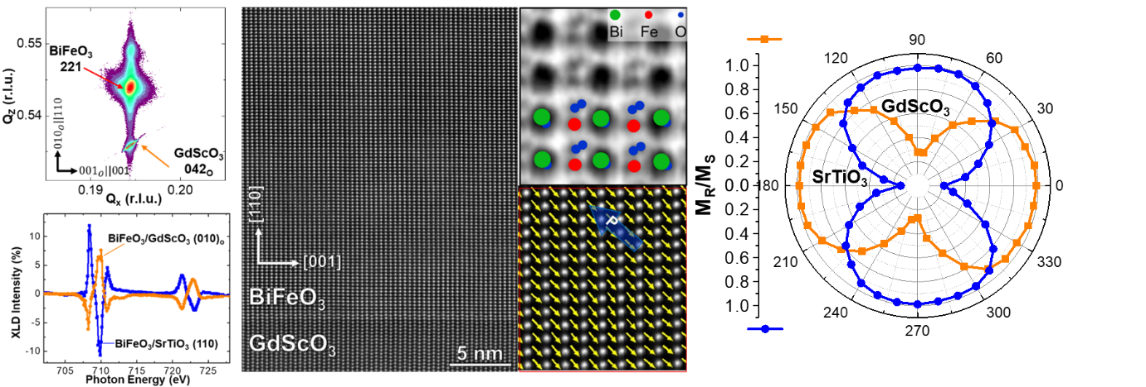With the approach of Moore's Law, power consumption has become the main bottleneck restricting the development of information technology, and traditional semiconductor process technology will reach the physical limit predicted by theory, and it is difficult to further reduce the power consumption of memory chips. How to reduce the power consumption of memory chips is the focus of academic and commercial research and development. Ferroelectric/multiferroic memory combines the high-speed read and write advantages of DRAM and the non-volatility of flash memory; among them, multiferroic memory can control the magnetic field with electric field due to its magnetoelectric coupling characteristics, effectively reducing power consumption, and contributing to device miniaturization and Multifunctionalization provides a new direction for the development of electronic technology in the post-Moore era. BiFeO3 (BFO) is a rare room temperature multi-ferrous material, which can realize electric writing and magnetic reading at room temperature, thereby greatly reducing the power consumption of the device. It has important value for basic research and practical applications. BFO antiferromagnetic sequence research is the prerequisite for understanding the magnetoelectric coupling effect and realizing electric field-controlled magnetic properties. However, the experimental methods for observing the antiferromagnetic spin structure are limited, and the existence of multiple ferroelectric domains in the film further makes the analysis more Difficult, so the antiferromagnetic structure of BFO film and the physical mechanism of its strain regulation have been controversial.
Professor Chen Zuhuang’s research group from Harbin Institute of Technology (Shenzhen) School of Materials Science and Engineering and the Institute of Materials Genetic Engineering and Big Data has cooperated with research groups of many universities and companies in the United States and Germany. New progress has been made in the research. This topic uses pulsed laser deposition technology to prepare high-quality (110) oriented BFO epitaxial films on different single crystal substrates. By controlling the thin film process in the (110) oriented film to obtain single domain BFO, the use of energy, polarization and angle resolution The synchrotron radiation soft X-ray magnetic line dichroic absorption spectroscopy technology determines the antiferromagnetic spin structure of the film under different strains (Figure 1). The study found that epitaxial strain can effectively control the orientation of the antiferromagnetic spin, and can further control the magnetic anisotropy of the coupled ferromagnetic layer Co0.9Fe0.1; combined with first-principles calculations, it is found that the adjustment of the strain on the antiferromagnetic properties is It is caused by the competition between the Dzyaloshinskii-Moriya interaction and the single ion anisotropy; further characterization of the ferroelectric polarization of the film found that tensile strain can destroy the vertical coupling relationship between polarization and antiferromagnetic spin (Figure 2). This work corrects the previous view that the antiferromagnetic order of BFO films is only determined by the Dzyaloshinskii-Moriya interaction, that is, the antiferromagnetic spin in the film must be perpendicular to the ferroelectricity. The research revealed the micro-mechanism of BFO thin film magnetic anisotropy and magnetoelectric coupling effect, which strongly promoted its practical application in a new generation of low-power memory and logic chips.
